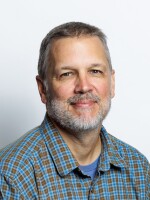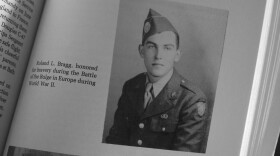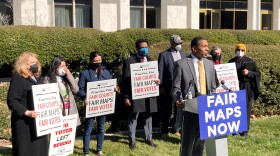I was lied to for much of my young life. I grew up in a small Midwestern town of about 10,000 people — all of them white. Well, almost all. According to the U.S. Census, one (1) Black person lived in Galion, Ohio in the 1980s. I never met or saw her (or him).
As a kid, I never really thought much about why that was. But in fifth grade, a teacher told our class a story. It was an aside, really. In a conversational monotone, he explained that the reason there were no Black people in town was because the “last one who lived here was lynched in the town square.”
I remember thinking it was some sort of terrible joke.
As a young person, I loved history. My parents had the Encyclopedia Britannica in our basement, and I plowed through it constantly, before I moved on to longer autobiographies and non-fiction books.
I believed every word. Later, when I realized that most of history is manipulated and the truth is usually much uglier and often racially motivated, I got really pissed.
Housing? Highways? The suburbs?
Everything around us was built to perpetuate and solidify white supremacy.
The more I learned, the more angry I grew at always feeling lied to. I wanted to find out the truth, and hold those who lied to some level of responsibility. I’m convinced that’s why I became a reporter.
Even as my focus turned to breaking news and current events, I never lost that love of history; but now I start with immense skepticism. For example: I read every roadside historical marker I pass and, when I’m able, I Google the person or event it depicts.
That’s what happened in Hillsborough a few years back when I came across a historical marker about a historian. That’s a double win! It read: “J.G. de Roulhac Hamilton. Historian, professor, & founder of the Southern Historical Collection at UNC. Born ½ block W.”
Alas, I was behind the wheel of my minivan and so as not to risk the lives of my wife, three kids, and dog, I committed the name to memory until I got home in front of my laptop.
I spent the next several days immersed in Hamilton’s biography and life, reading the digitized books he wrote and anything I could find that was written about him. Turns out, he was the perfect culmination of everything that made my blood boil: a historian who purposely skewed his research, writings, and events of the past to advance his white supremacist worldview.
A liar. A racist. A revered historian with his own historical marker.
I saved my notes in a file, believing there would be a right time and place to expose Hamilton’s story. How he puttered around the south in his Ford, gathering white people’s tales, like how they gifted enslaved Black people as birthday presents, and bringing all those documents back to form the famed Southern Historical Collection — from which a thousand more lying books and papers could be written.
Hamilton’s story was bouncing around my head the night protestors pulled Silent Sam to the ground on the campus of the University of North Carolina at Chapel Hill in August 2018. I was there, a reporter on the scene with my microphone and camera phone. I had walked by that monument to the Confederacy numerous times over the years, blissfully ignorant about its past, or how Black students and faculty felt in its midst.
I thought I was on a path to understanding, but I still had massive blind spots.
A developing story on that same campus presented an unexpected opportunity to pull out my file on Hamilton. That’s where an academic building — one that houses the history department, of course — is named for him. And that’s where a contingency of faculty have recently banded together to urge the university to change the name of Hamilton Hall.
Now, I thought. Now is the time for an honest look at all the lies Hamilton told, and the ongoing efforts to undo their damage. Professor William Sturkey is one of the faculty members calling for the removal of Hamilton’s name. He told me something that resonated. Standing in a courtyard outside Hamilton Hall during a socially-distanced conversation for the podcast Tested, he waved at all the buildings we could see through the leaf-less trees, and said:
“We’re surrounded by buildings named after political activists. The way that Hamilton collected materials was a political activity. And now all of a sudden, we’re supposed to be neutral. I think the reverse is actually true. I think we have an obligation to use the resources of the institution to undo some of the negative effects created by the institution itself.”
I spent too much of my life not realizing how the buildings, the monuments, and the political and social systems around us were built to honor people who often did terrible things, and protect the pillars of systemic racism.
I try to be on high alert, raising my kids to be aware of the world in a way I wasn’t, and trying to mentor a new generation of journalists to keep pushing for the truth and to pay close attention to an off-hand comment or anecdote. Often, they can offer more insight than a textbook or a biography or a historical marker.
Remember that story about the lynching in my hometown? The one I thought was a bad joke?
As I was researching Hamilton’s story a while back, I thought about that teacher I had in fifth grade and what he said about what happened to the last Black man in Galion. I decided to take a little research detour.
Took about two minutes to find out: It was not a joke.
His name was Frank Fisher.







